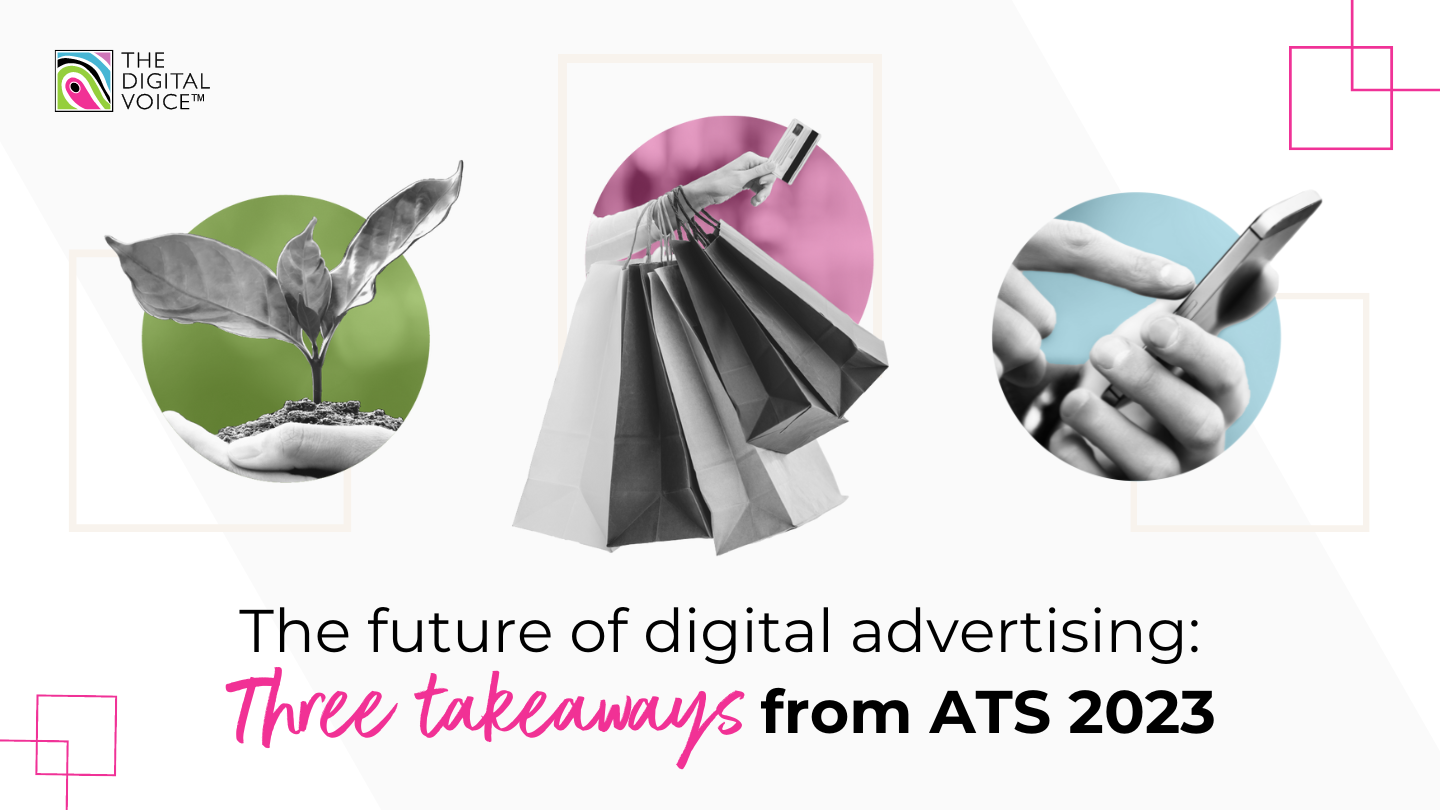The future of digital advertising:
three takeaways from ATS 2023

What a great event from ExchangeWire this week - two days packed full of panels, keynotes, case studies, fireside chats and networking opportunities.
And the content was simply awesome, with hot topics including retail media, sustainability, attention, contextual, in-game advertising, generative AI, programmatic OOH, identity, addressability and so much more.
In case you missed it, here are our top three takeaways from the event.
1. The ‘decade of retail media’ is upon us
Retail media is arguably the hottest topic in adtech right now, especially in the US where it’s growing more rapidly than elsewhere, according to Group M’s Ed Fanning. Despite various commercial and technological complexities that need to be overcome, latest forecasts predict that by 2028, retail media will
surpass TV - and account for approximately half of all ad revenue.
In the UK, we’re also seeing the emergence of retail media platforms, such as
Nectar360, utilising first-party data to empower brands to deliver more relevant messaging based on their actual purchase behaviour, while closing the measurement loop between online and offline sales.
The key takeaway?
Although it’s difficult to say which will be the ‘year of retail media’, we’ll likely look back in 2028 and declare the last ten years the ‘decade of retail media’.
2. Understanding the carbon footprint of the supply chain
We’ve been talking about sustainability for years, and rightly so. A digital ad campaign generates the equivalent of
323 tonnes of CO2eq - roughly 160 round-trip flights between Paris and New York. But today, explains Fanning, as more and more clients have net-zero goals, being able to measure the carbon footprint of the supply chain has become a priority.
In response, we’re seeing more and more companies joining initiatives such as
AdNetZero, whose mission is to reach net-zero emissions by 2023. But we’re also seeing the emergence of innovative carbon calculation tools to measure the impact of advertising on the environment.
For instance, SeenThis’s newly-launched
Emissions Dashboard is already making waves as it enables marketers to track, measure and analyse their carbon footprint stemming from data transfer, alongside their campaign performance.
While this is all great news for the industry, there is also a lot of talk about carbon offsetting - though we have a way to go before we start to see this happen across the board. For now, we need to make sure we’re taking steps towards tangibly reducing emissions before we can start to offset them.
The key takeaway?
The industry needs to develop standards for decarbonisation, so that marketers can use the same metrics to measure campaigns.
3. Attention and contextual are on the rise
The conversation around the need for attention metrics as a supplement to viewability has been around for some time now, and for good reason. As Sharethrough’s Curt Larson points out,
exposure does not equal attention, and
viewability does not equal attention.
Opt-in eye-tracking panels such as
Lumen and attention technology platforms such as
Playground xyz are really starting to help marketers understand which content is viewed and which engaged with, and how.
However, Larson goes on to explain that
attention does not equal comprehension. For instance, a video needs to visually show what is happening in case the user has the sound switched off, which, interestingly, most of us do! What’s more, over 50% of adults have the captions switched on - even when the sound is on. Why? Because there is a 56% increase in comprehension when captions are on.
With distraction comes opportunity.
The fact that consumers can’t actually watch TV without having their precious mobile phone by their side should be seen as a huge opportunity to advertisers: they have a sure-fire way of reaching them via their second screen during the commercial break, for example by providing QR code.
Meanwhile, contextual targeting is coming into its own, with solutions like
GumGum helping marketers reach customers ‘in the moment’. This year, as Zenith Global’s Daniel Sichel points out, clients are looking more closely into how contextual solutions can be embedded into their marketing strategy.
As an industry, one of the key aspects we need to look at is how we can leverage app inventory, by 1) improving how apps are developed on the technical side, 2) improving the quality of the content delivered, and 3) developing a solution to effectively monetise apps, to make them a more attractive channel for editorial teams.
Meanwhile, SmartFrame’s Zivile Vaisvilaite is an advocate of using AI in contextual advertising, because it enables marketers to deep-scan page content (video, text, image) at speed, for far more precise targeting.
The key takeaway?
When building out contextually relevant ad creative, always assume that users will have the sound switched off!
The main takeaway of the event for us was that as an industry, we’re starting to move on from a hyperfocus on ‘uncertain socioeconomic times’. Instead, we’re focusing on a whole host of new opportunities and innovations to take consumer engagement to the next level. Watch this space!



